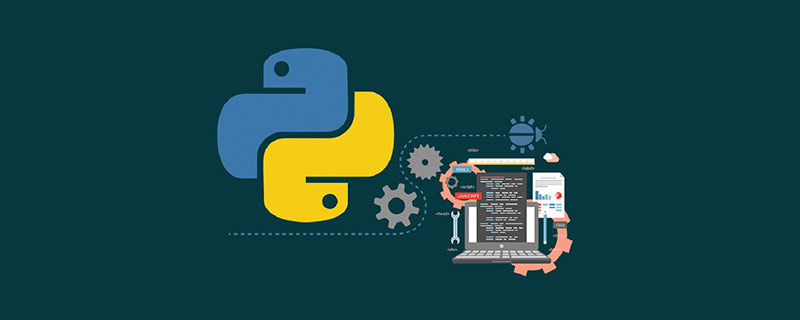Python教程欄目介紹Python中的Hook鉤子函數

大量免費學習推薦,敬請訪問python教程(視頻)
1. 什么是Hook
經常會聽到鉤子函數(hook function)這個概念,最近在看目標檢測開源框架mmdetection,里面也出現大量Hook的編程方式,那到底什么是hook?hook的作用是什么?
-
what is hook ?鉤子hook,顧名思義,可以理解是一個掛鉤,作用是有需要的時候掛一個東西上去。具體的解釋是:鉤子函數是把我們自己實現的hook函數在某一時刻掛接到目標掛載點上。
-
hook函數的作用 舉個例子,hook的概念在windows桌面軟件開發很常見,特別是各種事件觸發的機制; 比如C++的MFC程序中,要監聽鼠標左鍵按下的時間,MFC提供了一個onLeftKeyDown的鉤子函數。很顯然,MFC框架并沒有為我們實現onLeftKeyDown具體的操作,只是為我們提供一個鉤子,當我們需要處理的時候,只要去重寫這個函數,把我們需要操作掛載在這個鉤子里,如果我們不掛載,MFC事件觸發機制中執行的就是空的操作。
從上面可知
-
hook函數是程序中預定義好的函數,這個函數處于原有程序流程當中(暴露一個鉤子出來)
-
我們需要再在有流程中鉤子定義的函數塊中實現某個具體的細節,需要把我們的實現,掛接或者注冊(register)到鉤子里,使得hook函數對目標可用
-
hook 是一種編程機制,和具體的語言沒有直接的關系
-
如果從設計模式上看,hook模式是模板方法的擴展
-
鉤子只有注冊的時候,才會使用,所以原有程序的流程中,沒有注冊或掛載時,執行的是空(即沒有執行任何操作)
本文用python來解釋hook的實現方式,并展示在開源項目中hook的應用案例。hook函數和我們常聽到另外一個名稱:回調函數(callback function)功能是類似的,可以按照同種模式來理解。

2. hook實現例子
據我所知,hook函數最常使用在某種流程處理當中。這個流程往往有很多步驟。hook函數常常掛載在這些步驟中,為增加額外的一些操作,提供靈活性。
下面舉一個簡單的例子,這個例子的目的是實現一個通用往隊列中插入內容的功能。流程步驟有2個
-
需要再插入隊列前,對數據進行篩選
input_filter_fn -
插入隊列
insert_queue
class ContentStash(object): """ content stash for online operation pipeline is 1. input_filter: filter some contents, no use to user 2. insert_queue(redis or other broker): insert useful content to queue """ def __init__(self): self.input_filter_fn = None self.broker = [] def register_input_filter_hook(self, input_filter_fn): """ register input filter function, parameter is content dict Args: input_filter_fn: input filter function Returns: """ self.input_filter_fn = input_filter_fn def insert_queue(self, content): """ insert content to queue Args: content: dict Returns: """ self.broker.append(content) def input_pipeline(self, content, use=False): """ pipeline of input for content stash Args: use: is use, defaul False content: dict Returns: """ if not use: return # input filter if self.input_filter_fn: _filter = self.input_filter_fn(content) # insert to queue if not _filter: self.insert_queue(content) # test ## 實現一個你所需要的鉤子實現:比如如果content 包含time就過濾掉,否則插入隊列 def input_filter_hook(content): """ test input filter hook Args: content: dict Returns: None or content """ if content.get('time') is None: return else: return content # 原有程序 content = {'filename': 'test.jpg', 'b64_file': "#test", 'data': {"result": "cat", "probility": 0.9}} content_stash = ContentStash('audit', work_dir='') # 掛上鉤子函數, 可以有各種不同鉤子函數的實現,但是要主要函數輸入輸出必須保持原有程序中一致,比如這里是content content_stash.register_input_filter_hook(input_filter_hook) # 執行流程 content_stash.input_pipeline(content)
3. hook在開源框架中的應用
3.1 keras
在深度學習訓練流程中,hook函數體現的淋漓盡致。
一個訓練過程(不包括數據準備),會輪詢多次訓練集,每次稱為一個epoch,每個epoch又分為多個batch來訓練。流程先后拆解成:
-
開始訓練
-
訓練一個epoch前
-
訓練一個batch前
-
訓練一個batch后
-
訓練一個epoch后
-
評估驗證集
-
結束訓練
這些步驟是穿插在訓練一個batch數據的過程中,這些可以理解成是鉤子函數,我們可能需要在這些鉤子函數中實現一些定制化的東西,比如在訓練一個epoch后我們要保存下訓練的模型,在結束訓練時用最好的模型執行下測試集的效果等等。
keras中是通過各種回調函數來實現鉤子hook功能的。這里放一個callback的父類,定制時只要繼承這個父類,實現你過關注的鉤子就可以了。
@keras_export('keras.callbacks.Callback') class Callback(object): """Abstract base class used to build new callbacks. Attributes: params: Dict. Training parameters (eg. verbosity, batch size, number of epochs...). model: Instance of `keras.models.Model`. Reference of the model being trained. The `logs` dictionary that callback methods take as argument will contain keys for quantities relevant to the current batch or epoch (see method-specific docstrings). """ def __init__(self): self.validation_data = None # pylint: disable=g-missing-from-attributes self.model = None # Whether this Callback should only run on the chief worker in a # Multi-Worker setting. # TODO(omalleyt): Make this attr public once solution is stable. self._chief_worker_only = None self._supports_tf_logs = False def set_params(self, params): self.params = params def set_model(self, model): self.model = model @doc_controls.for_subclass_implementers @generic_utils.default def on_batch_begin(self, batch, logs=None): """A backwards compatibility alias for `on_train_batch_begin`.""" @doc_controls.for_subclass_implementers @generic_utils.default def on_batch_end(self, batch, logs=None): """A backwards compatibility alias for `on_train_batch_end`.""" @doc_controls.for_subclass_implementers def on_epoch_begin(self, epoch, logs=None): """Called at the start of an epoch. Subclasses should override for any actions to run. This function should only be called during TRAIN mode. Arguments: epoch: Integer, index of epoch. logs: Dict. Currently no data is passed to this argument for this method but that may change in the future. """ @doc_controls.for_subclass_implementers def on_epoch_end(self, epoch, logs=None): """Called at the end of an epoch. Subclasses should override for any actions to run. This function should only be called during TRAIN mode. Arguments: epoch: Integer, index of epoch. logs: Dict, metric results for this training epoch, and for the validation epoch if validation is performed. Validation result keys are prefixed with `val_`. """ @doc_controls.for_subclass_implementers @generic_utils.default def on_train_batch_begin(self, batch, logs=None): """Called at the beginning of a training batch in `fit` methods. Subclasses should override for any actions to run. Arguments: batch: Integer, index of batch within the current epoch. logs: Dict, contains the return value of `model.train_step`. Typically, the values of the `Model`'s metrics are returned. Example: `{'loss': 0.2, 'accuracy': 0.7}`. """ # For backwards compatibility. self.on_batch_begin(batch, logs=logs) @doc_controls.for_subclass_implementers @generic_utils.default def on_train_batch_end(self, batch, logs=None): """Called at the end of a training batch in `fit` methods. Subclasses should override for any actions to run. Arguments: batch: Integer, index of batch within the current epoch. logs: Dict. Aggregated metric results up until this batch. """ # For backwards compatibility. self.on_batch_end(batch, logs=logs) @doc_controls.for_subclass_implementers @generic_utils.default def on_test_batch_begin(self, batch, logs=None): """Called at the beginning of a batch in `evaluate` methods. Also called at the beginning of a validation batch in the `fit` methods, if validation data is provided. Subclasses should override for any actions to run. Arguments: batch: Integer, index of batch within the current epoch. logs: Dict, contains the return value of `model.test_step`. Typically, the values of the `Model`'s metrics are returned. Example: `{'loss': 0.2, 'accuracy': 0.7}`. """ @doc_controls.for_subclass_implementers @generic_utils.default def on_test_batch_end(self, batch, logs=None): """Called at the end of a batch in `evaluate` methods. Also called at the end of a validation batch in the `fit` methods, if validation data is provided. Subclasses should override for any actions to run. Arguments: batch: Integer, index of batch within the current epoch. logs: Dict. Aggregated metric results up until this batch. """ @doc_controls.for_subclass_implementers @generic_utils.default def on_predict_batch_begin(self, batch, logs=None): """Called at the beginning of a batch in `predict` methods. Subclasses should override for any actions to run. Arguments: batch: Integer, index of batch within the current epoch. logs: Dict, contains the return value of `model.predict_step`, it typically returns a dict with a key 'outputs' containing the model's outputs. """ @doc_controls.for_subclass_implementers @generic_utils.default def on_predict_batch_end(self, batch, logs=None): """Called at the end of a batch in `predict` methods. Subclasses should override for any actions to run. Arguments: batch: Integer, index of batch within the current epoch. logs: Dict. Aggregated metric results up until this batch. """ @doc_controls.for_subclass_implementers def on_train_begin(self, logs=None): """Called at the beginning of training. Subclasses should override for any actions to run. Arguments: logs: Dict. Currently no data is passed to this argument for this method but that may change in the future. """ @doc_controls.for_subclass_implementers def on_train_end(self, logs=None): """Called at the end of training. Subclasses should override for any actions to run. Arguments: logs: Dict. Currently the output of the last call to `on_epoch_end()` is passed to this argument for this method but that may change in the future. """ @doc_controls.for_subclass_implementers def on_test_begin(self, logs=None): """Called at the beginning of evaluation or validation. Subclasses should override for any actions to run. Arguments: logs: Dict. Currently no data is passed to this argument for this method but that may change in the future. """ @doc_controls.for_subclass_implementers def on_test_end(self, logs=None): """Called at the end of evaluation or validation. Subclasses should override for any actions to run. Arguments: logs: Dict. Currently the output of the last call to `on_test_batch_end()` is passed to this argument for this method but that may change in the future. """ @doc_controls.for_subclass_implementers def on_predict_begin(self, logs=None): """Called at the beginning of prediction. Subclasses should override for any actions to run. Arguments: logs: Dict. Currently no data is passed to this argument for this method but that may change in the future. """ @doc_controls.for_subclass_implementers def on_predict_end(self, logs=None): """Called at the end of prediction. Subclasses should override for any actions to run. Arguments: logs: Dict. Currently no data is passed to this argument for this method but that may change in the future. """ def _implements_train_batch_hooks(self): """Determines if this Callback should be called for each train batch.""" return (not generic_utils.is_default(self.on_batch_begin) or not generic_utils.is_default(self.on_batch_end) or not generic_utils.is_default(self.on_train_batch_begin) or not generic_utils.is_default(self.on_train_batch_end))
這些鉤子的原始程序是在模型訓練流程中的
keras源碼位置: tensorflowpythonkerasenginetraining.py
部分摘錄如下(## I am hook):
# Container that configures and calls `tf.keras.Callback`s. if not isinstance(callbacks, callbacks_module.CallbackList): callbacks = callbacks_module.CallbackList( callbacks, add_history=True, add_progbar=verbose != 0, model=self, verbose=verbose, epochs=epochs, steps=data_handler.inferred_steps) ## I am hook callbacks.on_train_begin() training_logs = None # Handle fault-tolerance for multi-worker. # TODO(omalleyt): Fix the ordering issues that mean this has to # happen after `callbacks.on_train_begin`. data_handler._initial_epoch = ( # pylint: disable=protected-access self._maybe_load_initial_epoch_from_ckpt(initial_epoch)) for epoch, iterator in data_handler.enumerate_epochs(): self.reset_metrics() callbacks.on_epoch_begin(epoch) with data_handler.catch_stop_iteration(): for step in data_handler.steps(): with trace.Trace( 'TraceContext', graph_type='train', epoch_num=epoch, step_num=step, batch_size=batch_size): ## I am hook callbacks.on_train_batch_begin(step) tmp_logs = train_function(iterator) if data_handler.should_sync: context.async_wait() logs = tmp_logs # No error, now safe to assign to logs. end_step = step + data_handler.step_increment callbacks.on_train_batch_end(end_step, logs) epoch_logs = copy.copy(logs) # Run validation. ## I am hook callbacks.on_epoch_end(epoch, epoch_logs)
3.2 mmdetection
mmdetection是一個目標檢測的開源框架,集成了許多不同的目標檢測深度學習算法(pytorch版),如faster-rcnn, fpn, retianet等。里面也大量使用了hook,暴露給應用實現流程中具體部分。
詳見https://github.com/open-mmlab/mmdetection
這里看一個訓練的調用例子(摘錄)(https://github.com/open-mmlab/mmdetection/blob/5d592154cca589c5113e8aadc8798bbc73630d98/mmdet/apis/train.py)
def train_detector(model, dataset, cfg, distributed=False, validate=False, timestamp=None, meta=None): logger = get_root_logger(cfg.log_level) # prepare data loaders # put model on gpus # build runner optimizer = build_optimizer(model, cfg.optimizer) runner = EpochBasedRunner( model, optimizer=optimizer, work_dir=cfg.work_dir, logger=logger, meta=meta) # an ugly workaround to make .log and .log.json filenames the same runner.timestamp = timestamp # fp16 setting # register hooks runner.register_training_hooks(cfg.lr_config, optimizer_config, cfg.checkpoint_config, cfg.log_config, cfg.get('momentum_config', None)) if distributed: runner.register_hook(DistSamplerSeedHook()) # register eval hooks if validate: # Support batch_size > 1 in validation eval_cfg = cfg.get('evaluation', {}) eval_hook = DistEvalHook if distributed else EvalHook runner.register_hook(eval_hook(val_dataloader, **eval_cfg)) # user-defined hooks if cfg.get('custom_hooks', None): custom_hooks = cfg.custom_hooks assert isinstance(custom_hooks, list), f'custom_hooks expect list type, but got {type(custom_hooks)}' for hook_cfg in cfg.custom_hooks: assert isinstance(hook_cfg, dict), 'Each item in custom_hooks expects dict type, but got ' f'{type(hook_cfg)}' hook_cfg = hook_cfg.copy() priority = hook_cfg.pop('priority', 'NORMAL') hook = build_from_cfg(hook_cfg, HOOKS) runner.register_hook(hook, priority=priority)
4. 總結
本文介紹了hook的概念和應用,并給出了python的實現細則。希望對比有幫助。總結如下:
-
hook函數是流程中預定義好的一個步驟,沒有實現
-
掛載或者注冊時, 流程執行就會執行這個鉤子函數
-
回調函數和hook函數功能上是一致的
-
hook設計方式帶來靈活性,如果流程中有一個步驟,你想讓調用方來實現,你可以用hook函數
相關免費學習推薦:php編程(視頻)
 站長資訊網
站長資訊網